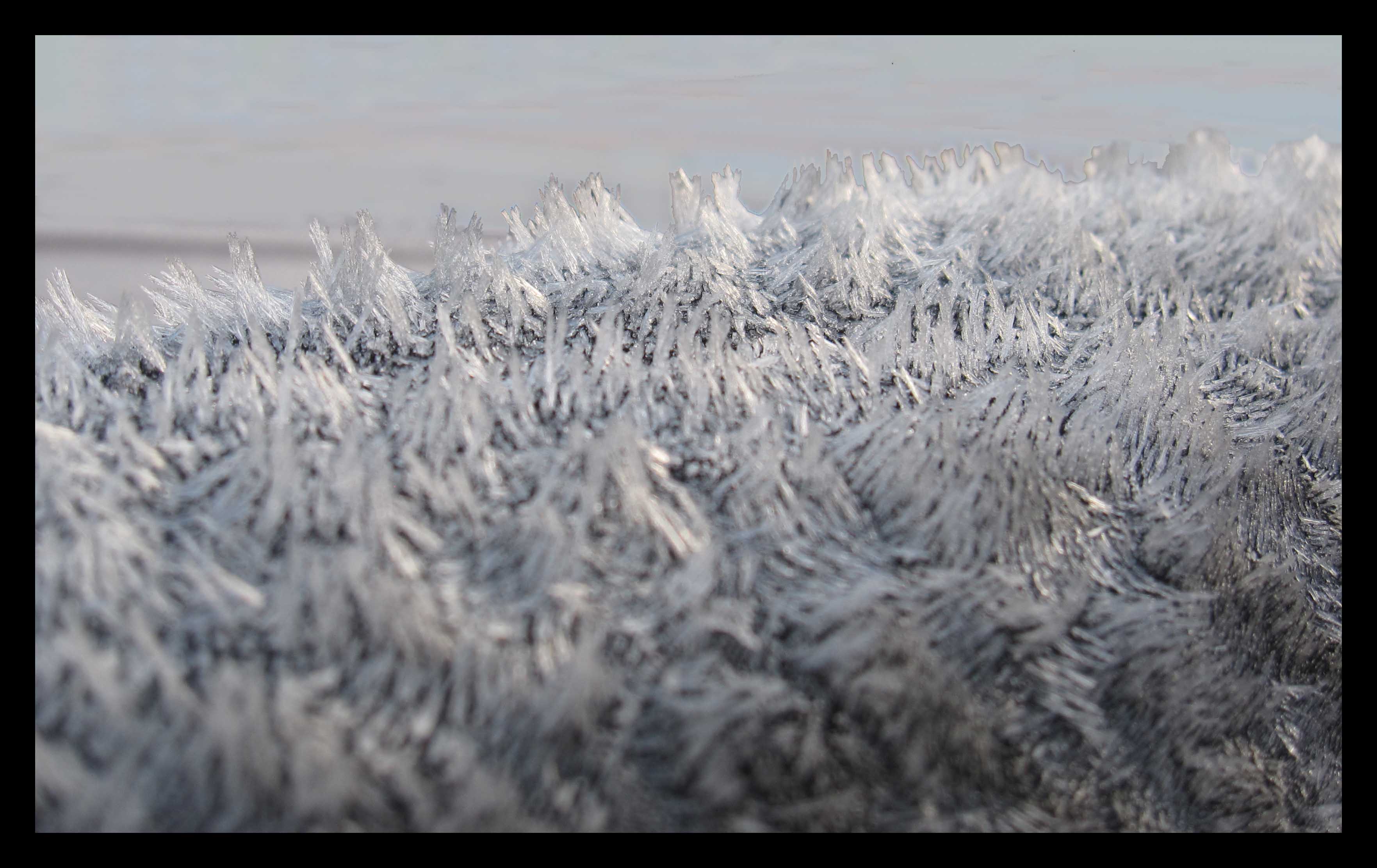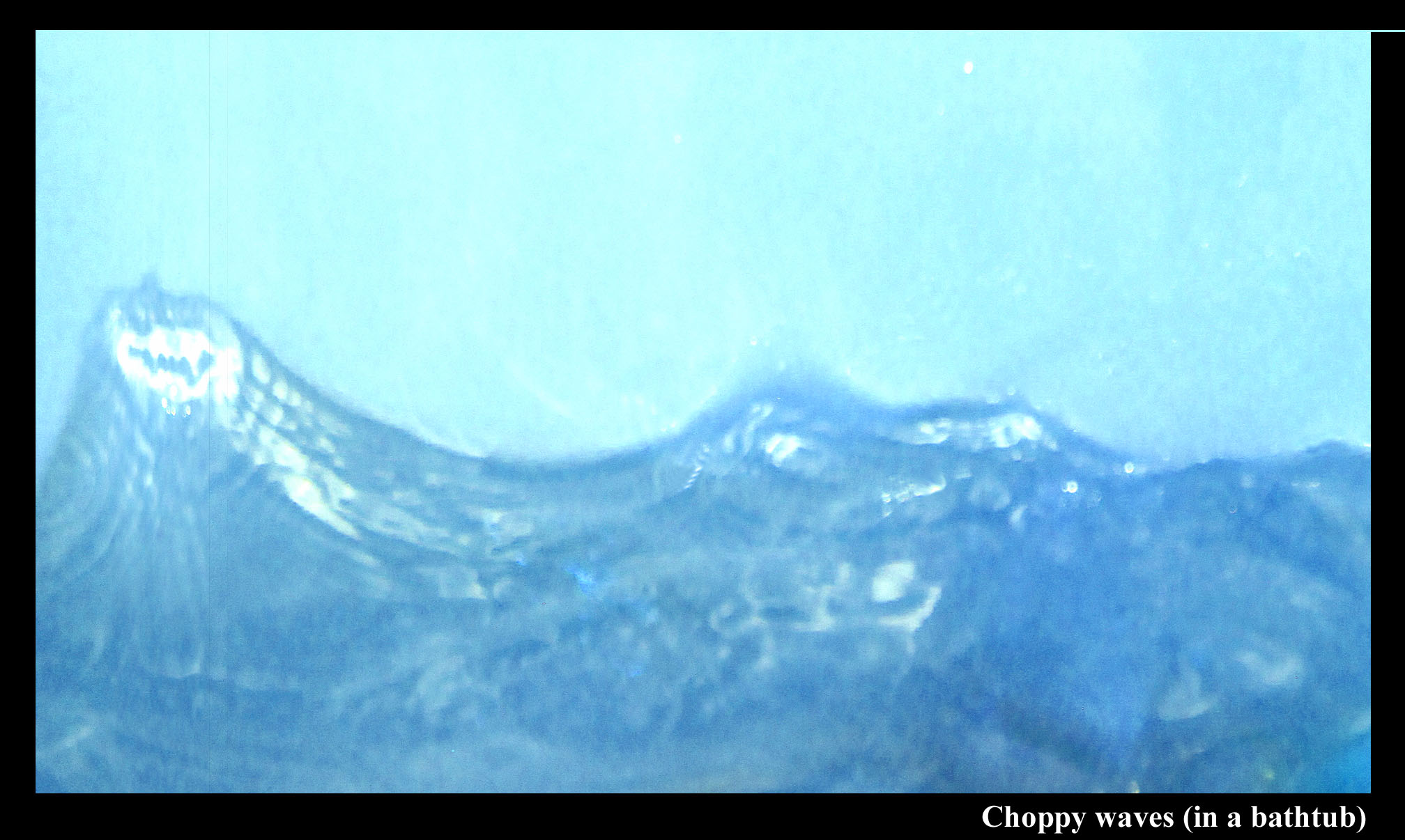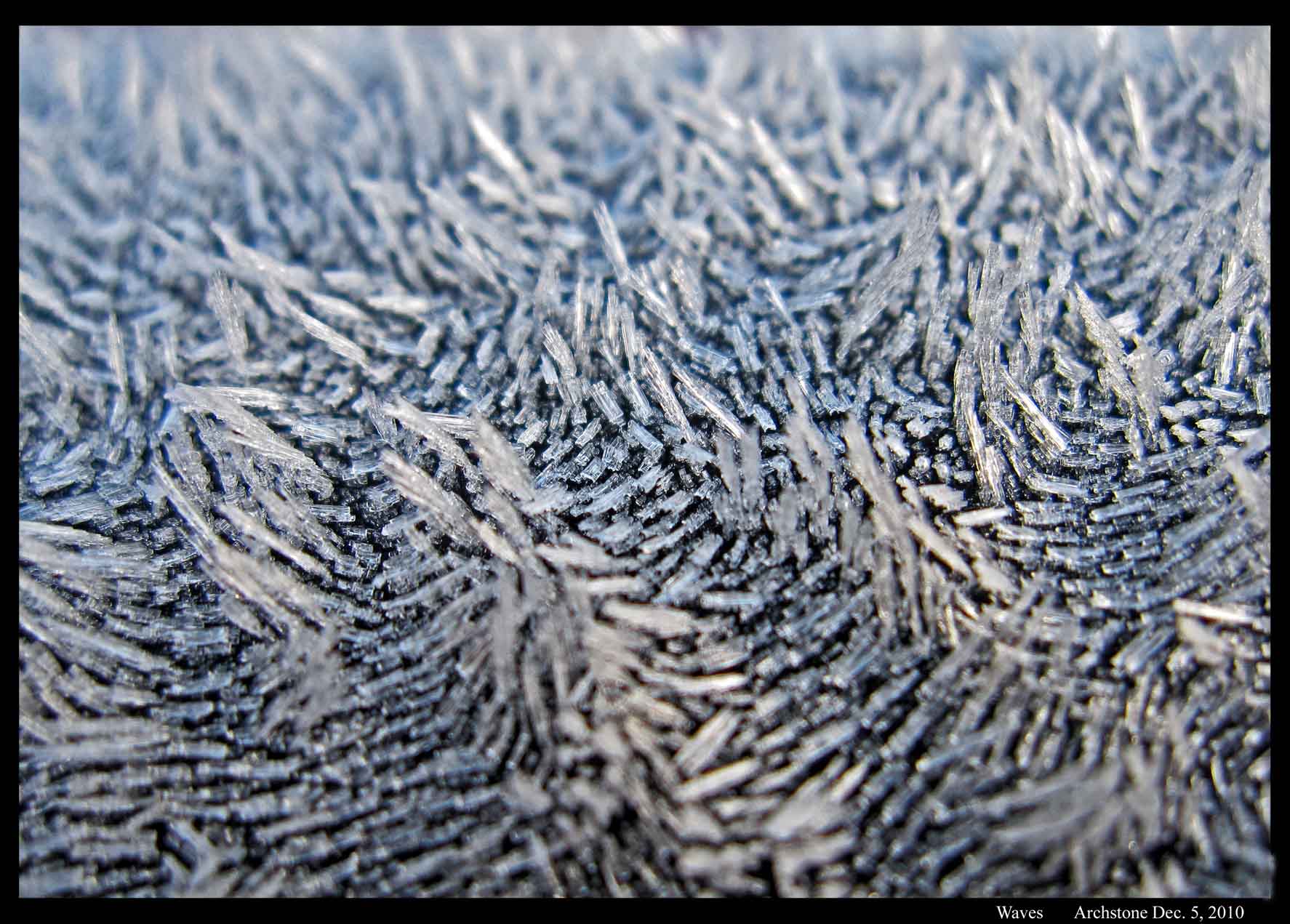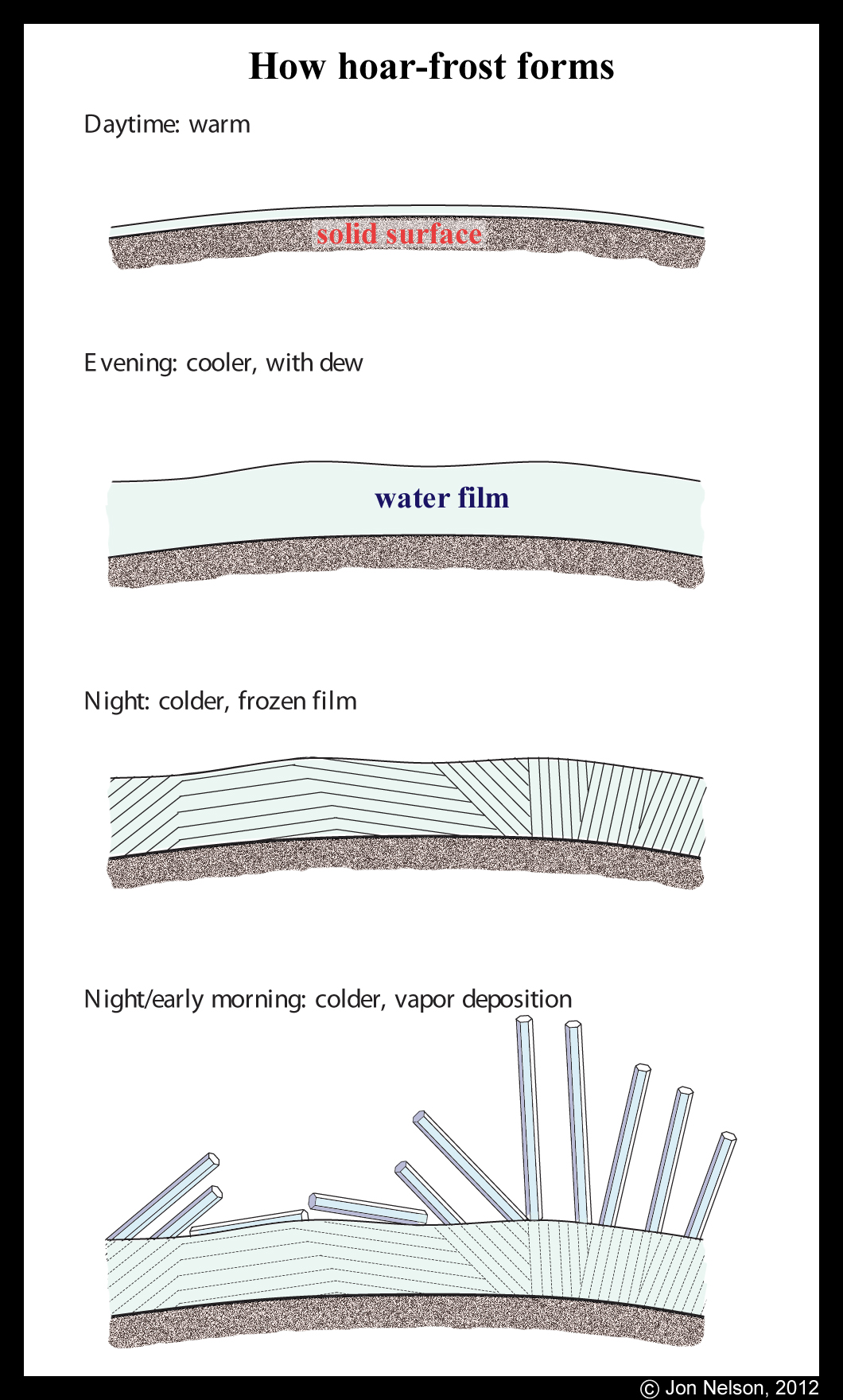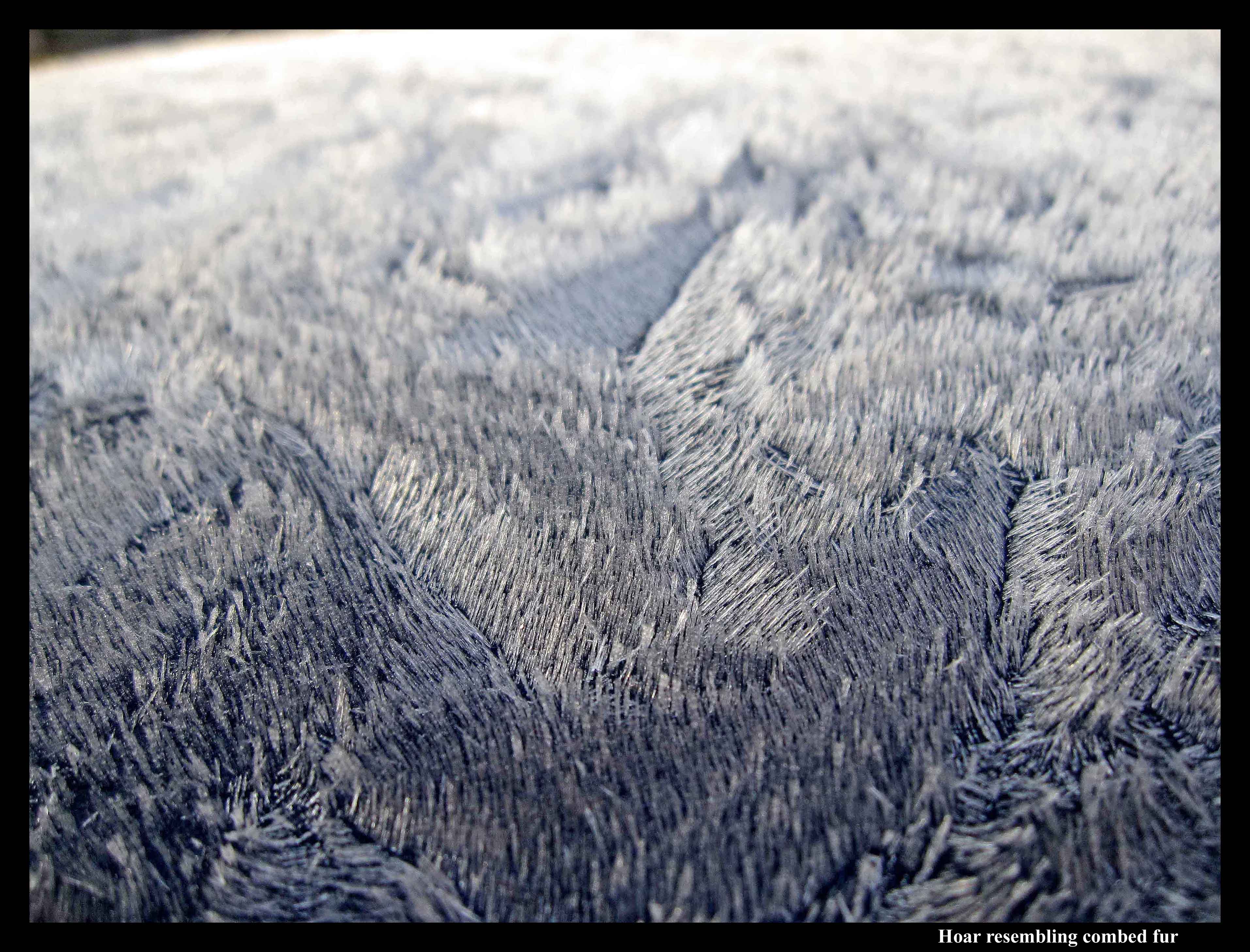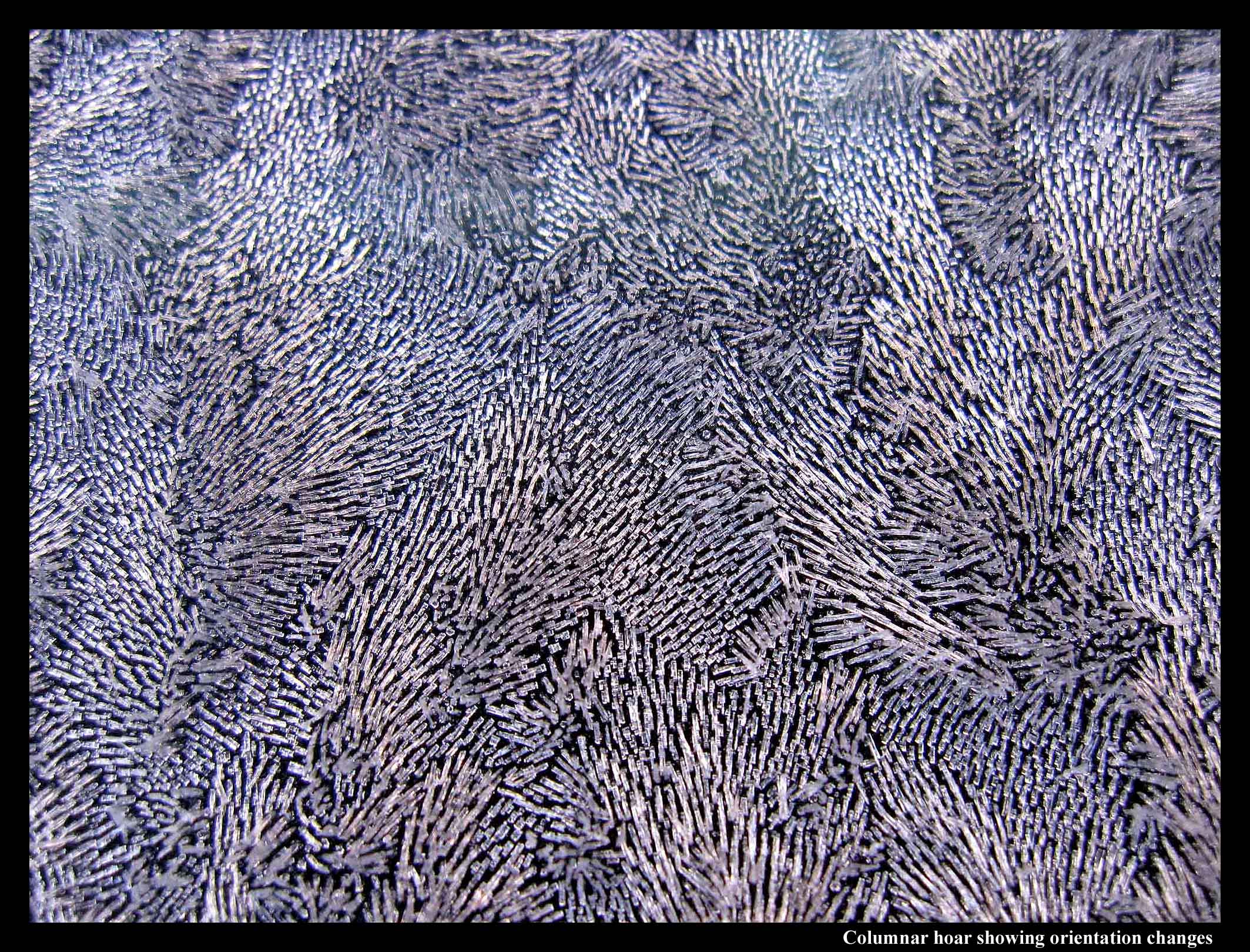| « Fun with windshield ice | The Six-fold Nature of Snow » |
Choppy waves
I thought this hoar frost pattern looked like rough seas. I see choppy, cusp-like waves down there.
Not having any pictures of rough seas, I hopped in our bathtub and kicked my legs around to make waves. Perhaps you can see a little resemblance.
However, the processes that caused the cusp-like, choppy wave pattern in the frost are completely different from those in the bathtub. Look more closely at the hoar-frost pattern:
It just goes to show you that hoar frost is never as simple as you’d think. Though from a distance it might look like white whiskers, up close it shows unexpected patterns. These patterns reveal something about how the crystals strained, twisted, and competed with each other.
Though it is true that the hoar crystals we see are built of deposited vapor molecules (invisible water molecules once floating in the air that happened to strike and freeze onto a cold surface), the story of hoar has an earlier beginning. In the beginning, the surface already had a thin film of liquid water. See the top panel in the sketch below.
As night approached (or in general, as the surface cooled), more water condensed as a liquid film on the surface. Whereas the original thin film wasn’t thick enough to feel wet, the thicker film would feel wet if you touched it. The film is dew, basically, as sketched in the second panel. Then, when the surface cooled below the freezing point, some ice crystals started forming. As the crystals grew in the film, they twisted and strained, changing their crystalline axes as they grow. As a result, neighboring regions in the frozen film have different crystalline directions. See the third panel in the sketch below. Oh, the ice would appear the same everywhere (the lines in the film are invisible), but still the molecular arrangements inside vary from region to region. These arrangements, or crystal orientations, are revealed to us when the vapor deposits as hoar, as sketched in the bottom panel.
There’s a lot more to the story than this simple description, and much of it unknown, but that’s the basic picture. I’ll discuss special cases in later posts. But for now, here are a few more examples. This one reminds me of fur that has been combed.
In most cases the hoar crystals are shorter. But you can see below how they still point in different directions.
What I’d really like to know is why the crystal orientations change. As far as I know, only two experimental studies have tried to find out. The curvy frost thing remains a mystery.
– Jon
